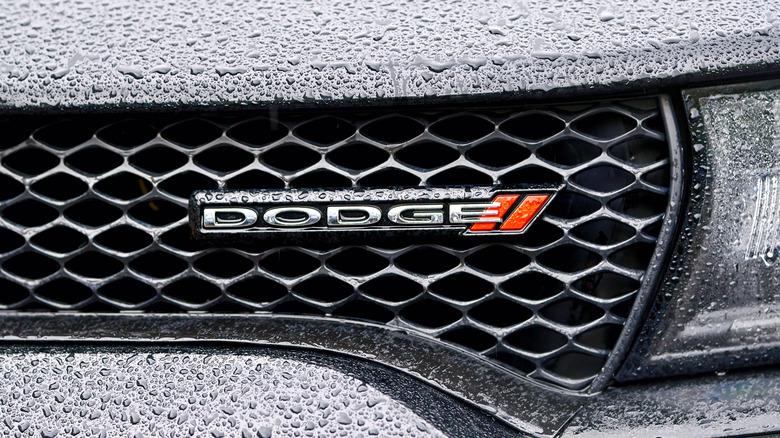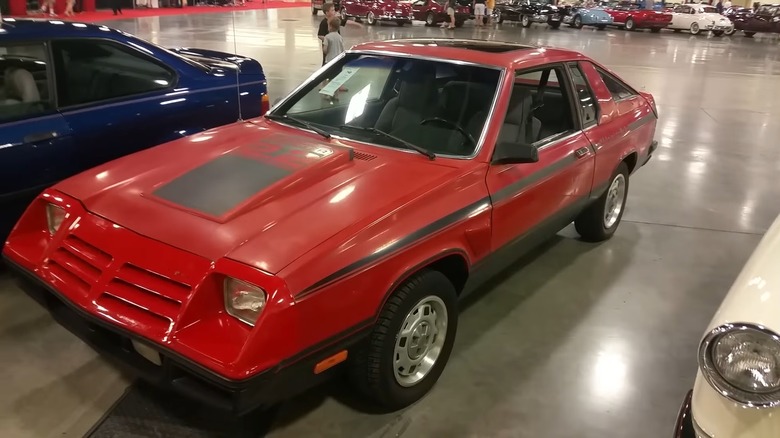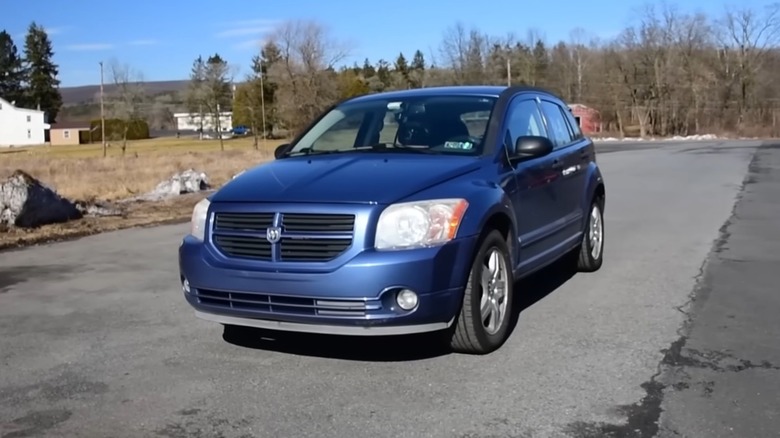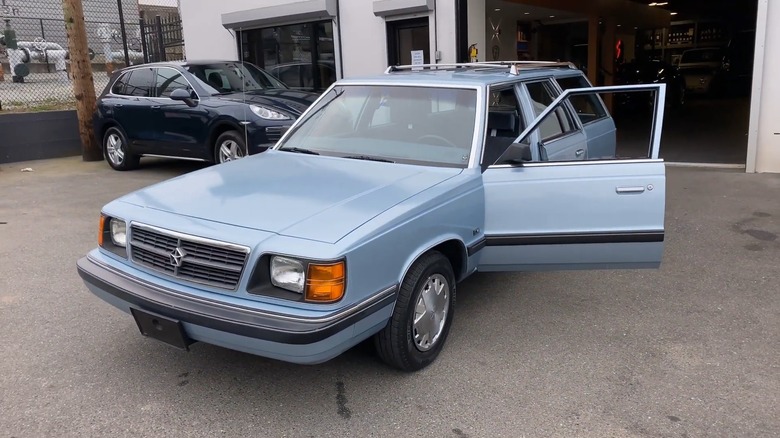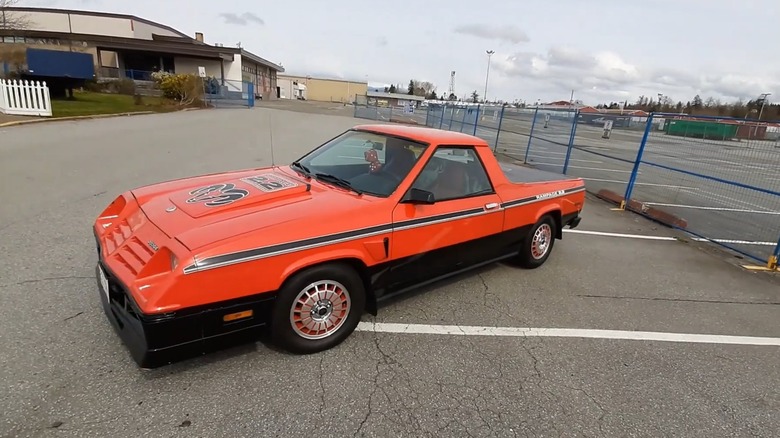4 Of The Worst-Looking Dodge Models Ever Made
The saying "beauty is in the eye of the beholder" is generally considered to originate from "Molly Bawn," a 1878 novel by Margaret Wolfe Hungerford. It means, of course, that the visual appeal of something is largely determined by the individual looking at it. Dodge constructed its first automobile in 1914, producing some stunning and eye-catching designs over the course of more than a century, including several popular cars Dodge should have never discontinued.
On the flip side, there have also been some less-well-received vehicles that offered an exterior form which few found appealing. Fortunately, it could have been worse, as demonstrated by some Dodge concept cars that we're glad were never mass produced.
Since looks are subjective, you may not agree with every choice on this list. After all, nearly every vehicle has at least a few fans (the exception being perhaps the Fiat Multipla, which is objectively one of the worst-looking cars ever designed). From several missteps in the 1980s to a short-lived 2000s compact hatchback, this list identifies some of the most unsightly cars Dodge has ever produced.
1982 Dodge Charger
The model name of some vehicles conjures up specific thoughts and expectations. For example, given the history of the Dodge Charger, you might anticipate the presence of a roaring 426-cubic inch V8, a coupe design and an output of 425 horsepower, as found in the 1969 Dodge Hemi Charger 500. Well, when the fifth generation of the iconic car launched in the early '80s, it offered fans little reason to take notice.
The early '80s Dodge Charger was transformed into a compact hatchback coupe with a boxy, sharp-angled design. Gone were the pleasing curves, vertical grill, and round headlights of the late '60s version, replaced with a very square and sloping front that many found underwhelming.
Perhaps its lackluster exterior could have been overlooked if it featured some serious oomph under the hood. Sadly, the standard engine in the 1982 Charger was a 1.7-liter inline-four cylinder that generated a measly 70 horsepower. Even worse, Dodge switched from rear-wheel to front-wheel drive, altering a key staple of the muscle car genre. The Charger would continue production until 1987, when it would take a long hiatus, not returning until 2006.
2007 Dodge Caliber
The Dodge Caliber isn't remembered fondly by many in the automotive sphere, and one reason is that it replaced the more popular Neon. One enthusiast reacting to the news at the time explained (via GT Planet), "When I heard about the Neon being replaced, that's one thing. Replacing it with a (let's face it) baby SUV deal, that makes people wish the Neon could have lasted longer."
The Caliber is considered a hatchback, but also comes across as a quasi-sport utility vehicle. There are plenty of crossovers that have pulled off a pleasing look, but between the box-like body, oversized grill, and pronounced fenders, the Caliber was off-putting. Some reviewers described its design as similar to a Dodge Durango that was shrunk down to a more compact size.
There was also a bit of disconnect between Dodge advertising and the reality of the Caliber during the mid-2000s that affected the public's perception. Print ads used the phrase, "Grab Life By The Horns," while commercials proclaimed, "It's Anything But Cute." The problem was, this hatchback wasn't some performance beast. It came equipped instead with a few different four-cylinder engine options. The most robust R/T version offered 2.4 liters under the hood and 172 horsepower.
1988 Dodge Aries
Traveling back to the '80s, Dodge introduced another one of its unsuccessful models, the Aries, a mid-size vehicle offered as a coupe, sedan, or station wagon from 1981 until 1989. This decade was full of cars that looked like boxes with wheels, but the Aries appearance was so unremarkable that it was forgotten within minutes. The automaker may have been attempting a more elegant motif, but it ended up looking cut-rate.
The Aries also embodied some of the worst design ideas in the history of the industry, like faux wood paneling running along the sides of the car from front to back. Some of the paint color choices were also questionable, as pictures of Aries sporting a light baby blue or muddy brown hue attest. In fact, one previous owner fondly referred to his car as "my little blue turd" (via RamCharger Central).
One owner admitted that the Aries had a strange appeal, remarking (via Grassroots Motorsports), "It was ugly, but for some reason it was cool." The wagon version in particular apparently attracted older drivers, which didn't help its image with younger demographics. This car was also another case where lackluster performance didn't do the model any favors. When asked what their worst experience behind the wheel was, one commenter at Final Gear explained, "1988 Dodge Aries. The single most gutless car ever, I could probably have outrun it on a lawnmower."
1983 Dodge Rampage
It wouldn't be surprising if you haven't heard of the Dodge Rampage, considering it only had a production life of three years in the early '80s. Envision the boxy front end of the 1982 Charger, but instead of a hatchback, it's got a pickup bed. Two-tone color schemes were available, with side stripes giving it an awkward but energetic appearance. You could also find the Rampage with a distinctive Ram logo adorning the hood or even a pronounced scoop advertising the 2.2-liter engine option, which added to the sportiness factor but clashed with the pickup crossover design. Some models offered a red interior, which is certainly a bold choice and not something seen often today.
The car-pickup crossover does have its fans, particularly among those who liked the iconic Chevy El-Camino. But where the El-Camino made the crossover look seamless and natural, the Rampage transition from car-front to pickup-rear seemed more akin to a Frankenstein mishmash than a mass-produced car. The Rampage didn't exude ruggedness, but to its credit, could haul a payload up to 1,145 pounds.
Believe it or not, the Rampage does have a loyal following, although fewer of these vintage car-pickups are on the road today. Dodge ultimately discontinued the Rampage for a variety of reasons, including a shift in consumer interest.
